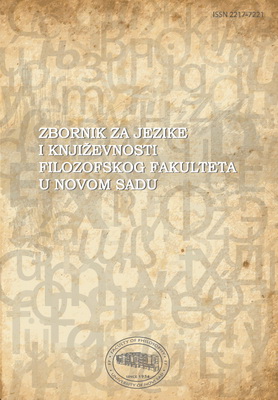DVOSTRUKI MODALI U PRIMERIMA BRITANSKOG ENGLESKOG JEZIKA
DOUBLE MODALS IN BRITISH ENGLISH EXAMPLES
Author(s): Aleksandra M. RadovanovićSubject(s): Language and Literature Studies
Published by: Филозофски факултет, Универзитет у Новом Саду
Keywords: double modal; modality; meaning, English;
Summary/Abstract: Double modal (DM) structures are employed by speakers of some English dialects.Central modals, because of their semantic and syntactic features, are not used successively in Standard British English. This paper aims to explore the occurrences of double modal constructions in British National Corpus, describe their meaning and point out the similarities and differences with the DM used in dialects. The introduction is devoted to modality as a semantic category, its types and the central modal verbs. Then the brief outline of previous research of DM in dialects is presented. The main part of the paper presents examples of the use of verbs may, might, shall and must with other central modals retrieved from the Corpus (and where necessary points out the specific collocations with semi-modals (eg. must have to) and focuses on their semantic properties. The analysis has shown that these examples of DM in standard English are lexically and semantically quite different from the DM used in dialects. The paper argues that various combinations of modal meanings (epistemic+dynamic, epistemic+epistemic etc.) are used in order to either emphasise the type of modality or add additional meaning to the proposition. In some cases of DM, some modals can be found redundant. These constructions are mainly used to express uncertainty or possibility.
Journal: Zbornik za jezike i književnosti Filozofskog fakulteta u Novom Sadu
- Issue Year: 2/2012
- Issue No: 2
- Page Range: 123-137
- Page Count: 14
- Language: Serbian

